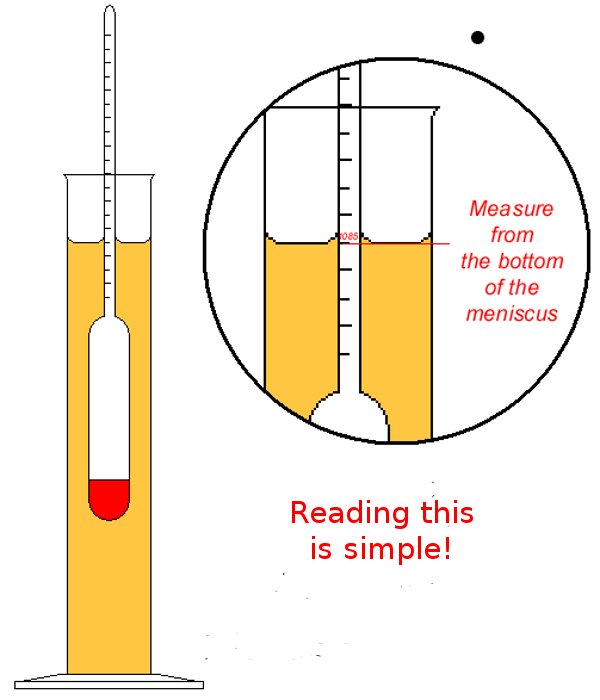Where we're at - and a finding!
Dai: the limited Alko sheets that were available were already obtained and published by the Count - until, unless and only if others become available. Do read the following - we finally have an easy and expensive answer that all of us can use right now to test all the rums we have - together, a huge collection.
After some professional advice from a couple friends (one a distiller, one a vintner) here's where we're at:
1. The distiller does not recommend a refractometer, as these compare a solution to distilled water. Since alcohol has a lower density, the Brix (sugar) readings will be too high. Still, I believe a correction table/graph can be created by testing a grain alcohol/water solution (at 40%) with increasing amounts of added sugar. To be tested. Cost: about $25. Advantage: quick, easy, very accurate, requires only drops to test.
2. The distiller did recommend using a hydrometer to test specific gravity of a rum. If sugar is present, the specific gravity (density) will be higher. The task again: to create a table as above. Cost: under $10. Advantage: quick, easy but less accurate (should be able to ID rums with sugar <3g/liter). Cons: requires more rum to fill test column (but which can be returned to the bottle); also <3g is not the result we seek.
3. The vintner noted the above issues, and recommended a number of techniques common in winemaking to test for “residual sugar” in a finished wine. These are all based on common methods used by diabetics to test their blood or urine sugar to determine if and how much insulin should be administered.
Special Note: the following copy was heavily edited/corrected based on Hass' excellent and accurate observation (see next post) . I mistakenly confused vintners' testing for "residual sugar" tests to mean testing for sucrose. Hass' hint: it's a glucometer, not a sucrometer", Fortunately, as the Compleat Idiot of Rum (and now sucrose too), I am allowed such deviations from obvious reality.
These include the Clinitest tablets, Diastix dip strips, and an ordinary glucometer, very accurate and quite economical. Unfortunately, and as the Compleat Idiot I interpreted "residual sugars" in finished wine to - urp - to mean or include well, sugar or sucrose. Wrong! It turns out that the "
residual sugars" tested for emanate from the grapes which - urp, again - are "mostly glucose and fructose". Although some table sugar/sucrose is added to ferments, most of this is converted during the ferment. Thus the diabetic tests work just fine for vintners testing for glucose rich "residual sugars".
The maple sugar industry also widely uses these tests to measure and adjust "invert sugars". Although maple sap is entirely sucrose, it is the converted, glucose rich "invert sugars" that are being measured.
Thus my assumption that the glucometer might be the winning method turns out to earn an undisputed "10" on Sleepy's now relevent "Bogometer". A big thanks to Hass for pointing out I forgot to dress this morning...
Bottom Line
Seales' suggested hydrometer and methodology remains the leading candidate. I have one, and need only create a 40% alcohol/distilled water reference solution and test it with varying amounts of sugar/sucrose to create a table usable by all. While doing so, and while uncertain I'll also attempt creating a refractometer table, and this only because I'd much rather measure drops, and more accurately.
Stay tuned... and a big thanks to Hass, whose following comment caused this necessary edit.
In review...
1. Refractometer ($25) not certain, drops, accurate must be tested and table created. Still possible.
2. Hydrometer ($10), certain, est. 4 to 8 oz of rum, may require more than 3g/l to be noted, table must be created. Some concern over very low levels of sugar, but this will be determined. The now leading candidat
3. Diabetic tests (Clinitest, Diastix, Glucometer), all work, from 14 cents to 60 cents per test, but not for sucrose. Oops.

 ...
...